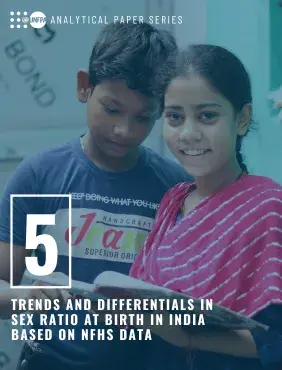Son preference is a deep-rooted cultural phenomenon in many countries including India, which results in discriminatory and harmful practices against women and girls. Many couples would like the family line to continue and in patrilineal societies, male offspring are needed for this purpose.
Even though India has enacted laws banning the use of pre-natal diagnostic techniques for sex detection, the practice seems to be continuing in some regions of the country as seen from the estimates of the sex ratio at birth (SRB).
The objectives of this paper are to trace trends in SRB using unit-level data from various rounds of the NFHS and analyse differentials in SRB based on demographic characteristics such as birth order and sex composition of previous children and geography.


